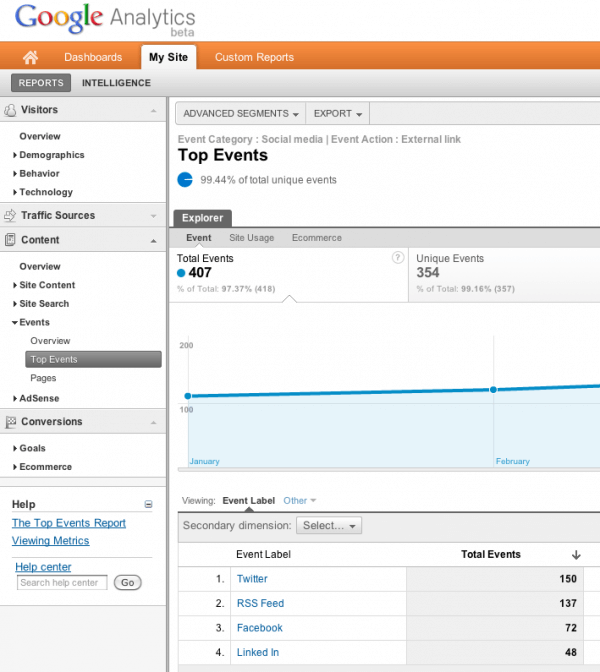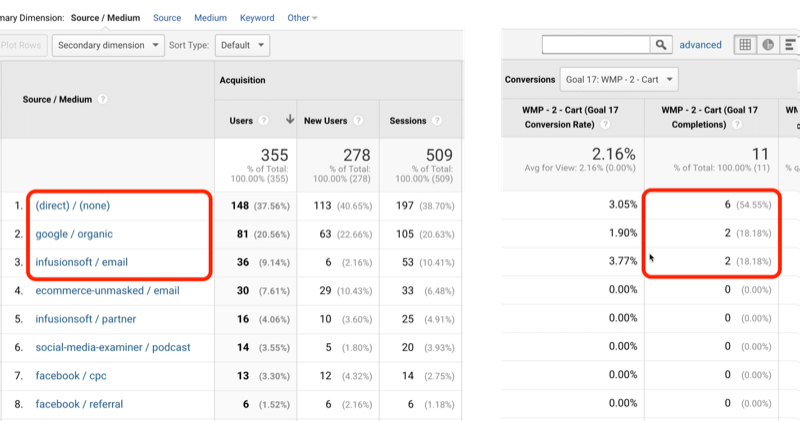Trick Insights on What Data Is Google Analytics Goals Unable to Track
Trick Insights on What Data Is Google Analytics Goals Unable to Track
Blog Article
Discover the Limitations of Google Analytics Goals: Introducing the Data Kind That Remain Untrackable
As services progressively count on data-driven decision-making, understanding the restrictions of devices like Google Analytics becomes vital. While Google Analytics Goals deal valuable insights into individual communications, there exist data kinds that thwart monitoring, posturing challenges to a thorough understanding of customer behavior.
Insufficient User Journey Tracking
Incomplete individual journey monitoring within Google Analytics can hinder the capability to precisely examine individual behavior. When the user journey is not totally tracked, there are gaps in the information that prevent a thorough understanding of how users interact with a site. This absence of understanding can cause missed possibilities for optimization and renovations to the individual experience.
One common problem with insufficient customer trip monitoring is the failure to see the complete course that customers take in the past finishing a goal or leaving the website. Without this information, it is testing to determine where individuals may be coming across barriers or friction factors that avoid them from converting. Additionally, incomplete monitoring can obscure the effect of particular advertising initiatives or internet site adjustments on individual behavior.
To resolve this constraint, it is essential to establish proper monitoring systems within Google Analytics to catch the entire individual trip. This may involve setting up occasion tracking, goal funnels, or utilizing tools like Google Tag Supervisor to make sure that no vital communications go unrecorded. By getting a detailed sight of the customer trip, site owners can make more informed decisions to boost individual involvement and drive conversions.
Attribution Difficulties
Navigating with attribution difficulties in Google Analytics requires an extensive understanding of how various touchpoints add to the total conversion process. Acknowledgment difficulties arise from the intricacy of modern client trips, where users communicate with several networks before converting. Google Analytics offers various acknowledgment designs like initial touch, last touch, and direct, each supplying a various point of view on just how credit history is assigned to touchpoints along the conversion path. These models might not constantly properly mirror the true influence of each touchpoint on the conversion.
One usual attribution challenge is the trouble in attributing conversions to the appropriate source, specifically in instances where customers connect with numerous channels prior to converting. This can result in mistakes in identifying which advertising and marketing efforts are driving one of the most conversions. In addition, cross-device monitoring poses an additional attribution challenge, as users commonly switch over in between devices during their journey, making it challenging to track their communications perfectly. Marketing professionals have to meticulously translate and evaluate attribution data to make informed choices and enhance their marketing techniques efficiently.
Offline Conversions
Provided the obstacles connected with attributing conversions properly in online channels, the measurement of offline conversions offers a significant chance for marketers looking for a more comprehensive understanding of their clients' trip. Offline conversions refer to actions that clients absorb the physical world, such as making acquisitions in brick-and-mortar shops or over the phone, going to occasions, or engaging with published products - what data is google analytics goals unable to track. These conversions are important for companies that run both online and offline, as they give important understandings right into the efficiency of marketing campaigns across numerous touchpoints
Tracking offline conversions typically presented a significant difficulty for marketing professionals, as it was testing to attach these actions back to details online communications precisely. Nonetheless, with advancements in technology, such as the combination of CRM systems, one-of-a-kind identifiers, and discount coupon codes, services can currently connect the gap between online and offline data to gain a more holistic sight of customer behavior. By successfully measuring offline conversions, online marketers can enhance their techniques, assign resources much more effectively, and ultimately enhance the total consumer experience.
Cross-Device Tracking
Cross-device tracking plays a vital role in recognizing the interconnected nature of consumers' electronic communications across several tools. In today's omnichannel globe, where users flawlessly change in between smart devices, desktop computers, and tablets, tracking their actions across these devices is essential for online marketers to obtain a thorough sight of their consumer journey.

Moreover, personal privacy issues and guidelines such as GDPR and CCPA have even more challenging cross-device monitoring. With customers requiring more control over their data and enhanced limitations on monitoring technologies, marketing experts must find privacy-compliant and ingenious means to right here attach individual communications across devices.
Dynamic Web Content Engagement
Comprehending customer interaction with dynamic material is pivotal in optimizing electronic marketing approaches for boosted audience communication. Dynamic material describes web site aspects that alter based upon individual behavior, preferences, or other elements, using a customized experience. Tracking user communications with dynamic material positions obstacles for standard analytics devices like Google Analytics.
While Google Analytics can track fundamental communications like clicks and web page sights, it may struggle to record even more nuanced involvements within dynamic material. what data is google analytics goals unable to track. Metrics such as time invested in details vibrant aspects, float activities, or communications within pop-ups are often not quickly measurable making use of typical tracking approaches. This constraint prevents marketers' ability to completely comprehend just how users are engaging with vibrant material and tailor their techniques accordingly

Final Thought
To conclude, Google Analytics objectives have limitations in tracking find more info insufficient individual journeys, connecting conversions accurately, capturing offline conversions, tracking cross-device communications, and measuring dynamic content engagement. These restraints highlight the importance of discovering additional monitoring techniques and tools to obtain a much more detailed understanding of individual actions and conversions past what Google Analytics can offer.
While Our site Google Analytics Goals deal useful understandings into user communications, there exist information types that elude monitoring, presenting difficulties to a detailed understanding of user habits.Insufficient customer trip monitoring within Google Analytics can prevent the ability to properly analyze customer behavior. When the individual trip is not completely tracked, there are voids in the data that prevent an extensive understanding of just how customers interact with a site.One usual problem with incomplete customer trip tracking is the lack of ability to see the full course that users take previously finishing an objective or leaving the website. By obtaining a detailed view of the customer journey, web site owners can make even more educated choices to boost user engagement and drive conversions.
Report this page